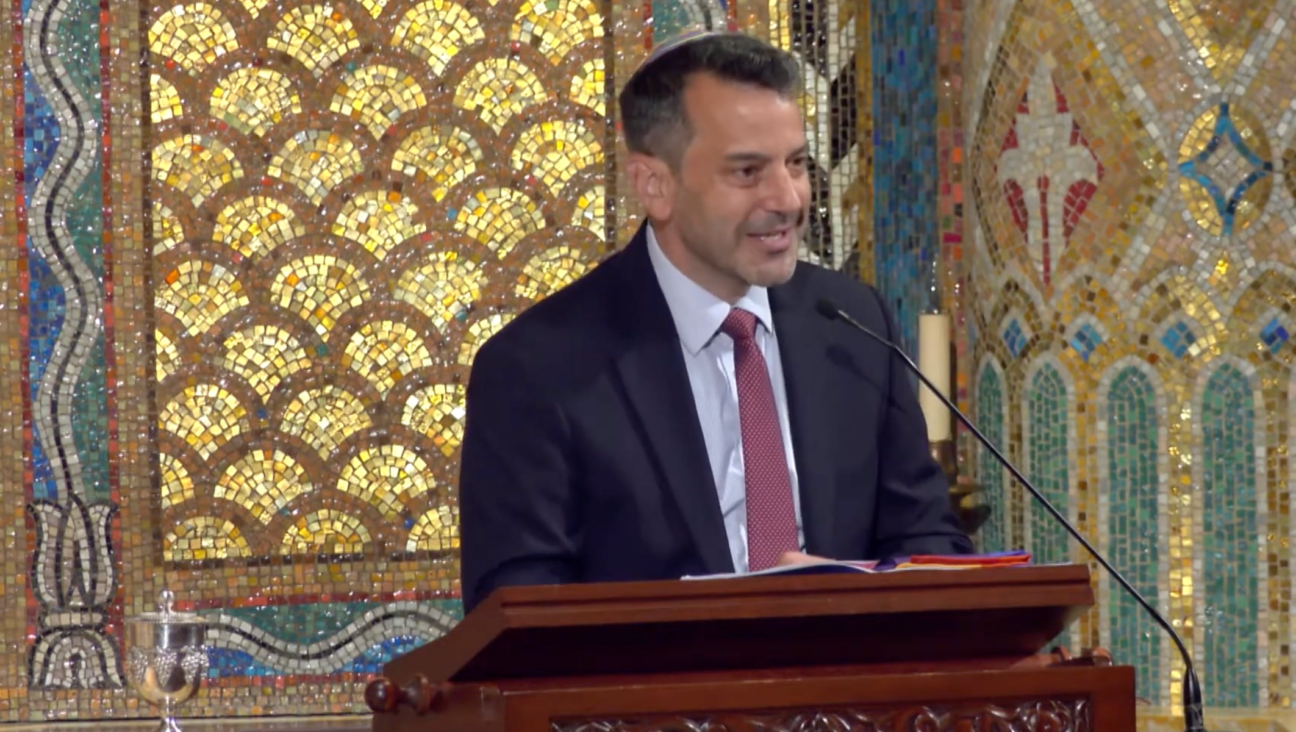After WWII, Her Stories Gave New Life To A Shattered Jewish World

A scene in Siberia in 1905. Image by Robert Henry Chandless/University of Washington/Wikimedia Commons
This article originally appeared in the Yiddish Forverts.
The story of the Jews during the Holocaust era is usually divided into that of two zones: the Jewish zone, which includes the ghettos and the camps under the Germans and their allies, and the “free” zone, which includes the territories that were free of Nazi domination.
This two-fold division doesn’t take into account a third important zone which, during the Second World War, included hundreds of thousands of Jews: the Soviet prisons, camps and “special settlements” in Siberia, the Far East and the Northern region of the Soviet Union. Of course, this area wasn‘t free. That’s where all kinds of “enemies” of the Soviet regime from areas the Soviet Union had annexed after the outbreak of the war — the eastern part of Poland, Lithuania, Latvia and Romanian Bessarabia and Bukovina — were exiled.
Yet as hard as life in Siberia was, the fate of the Jews during that exile was far better than it would have been at home under the German and Romanian occupations.
On June 14 1941, one week before Germany attacked the Soviet Union, the Soviet secret police arrested and deported about 100,000 people from all the “New” Soviet territories. Among them were so-called “capitalists,” who usually owned stores or small private businesses, political activists — especially members of Zionist parties — local intellectuals, administrators and clergy. A large number of the those arrested as a result of this wave of repression were Jews. That fact is often suppressed today in Ukraine, Lithuania, Latvia and Moldavia, where nationalists have accused Jews of abetting the Soviet secret police.
Yenta Mash was 19 years old when her whole family was deported from their town of Zguritsa in Bessarabia. The Soviets sent the men to do hard labor in the Ural Mountains and the women into Siberia to live in “special settlements.” Life in Siberia was very difficult for the Bessarabian Jews. There was very little food, they had to work hard and the winters were long and bitterly cold.
During this time, Mash lost both parents. Her father died in Ural, and her mother, as Mash mentions in her story “Bread,” “went out to gather blueberries on the 20th of August and remained there in the frozen forest tundra forever.” She had apparently lost her way and was never found. After returning to Bessarabia at the end of the war, Mash settled in Kishinev, where she worked as a bookkeeper. At the beginning of the 1970s, as soon as it was possible to do so, she immigrated to Israel, where she began to write.
Mash was very successful in her Yiddish literary career. Her work was published in the most prestigious Yiddish magazines, such as Di Goldene Keyt. Several of her books were published and received highly regarded prizes. But only now, with the help of the talented translator Ellen Cassidy, have Mash’s stories become organized in a book for an English-speaking audience. The book, titled after one of Mash’s story “On the Landing,” consists of 16 autobiographical stories. They more or less chronologically follow the writer’s life from Siberia back to Bessarabia and then onto Israel.
Mash describes her exile in Siberia in a style reminiscent of fairy tales. See, for instance, “Bread,” in which Mash writes “During that time, the lost tribe — the ‘exiled ones,’ widely scattered beyond the Mountains of Darkness, celebrated — to be ironic — their exile in Siberia, due to their own imaginary sins or those of their parents.” While the story sounds lofty in English, its even grander and more idiomatic in Yiddish. “In those bitter days, we’d been scattered to the ends of the earth, exiled to Siberia for our own or our parents’ supposed transgressions,” Mash writes. “We were the lost tribe, the deportees.” Cassidy’s translation makes Mash’s characteristic style more informal, but in the process Mash’s prose loses its noble, epic pace.
The publication of English translations of Mash’s work is important for at least three reasons. First, this is a good example of fine literature; second, Mash’s stories reveal a chapter of Holocaust-era history that is little known today even among historians; and third, it’s a significant contribution to the growing library of women’s literature in Yiddish.
Watch Yente Mash describe her career at 31:50 in Boris Sandler and Chana Pollack’s documentary on Yiddish writers in Israel
A message from our Publisher & CEO Rachel Fishman Feddersen

I hope you appreciated this article. Before you go, I’d like to ask you to please support the Forward’s award-winning, nonprofit journalism so that we can be prepared for whatever news 2025 brings.
At a time when other newsrooms are closing or cutting back, the Forward has removed its paywall and invested additional resources to report on the ground from Israel and around the U.S. on the impact of the war, rising antisemitism and polarized discourse.
Readers like you make it all possible. Support our work by becoming a Forward Member and connect with our journalism and your community.
— Rachel Fishman Feddersen, Publisher and CEO
























